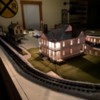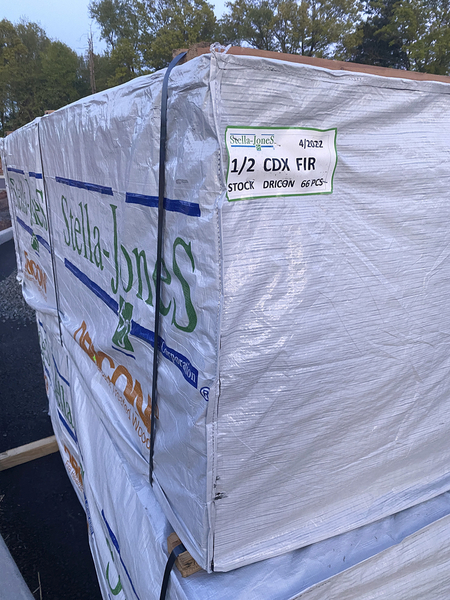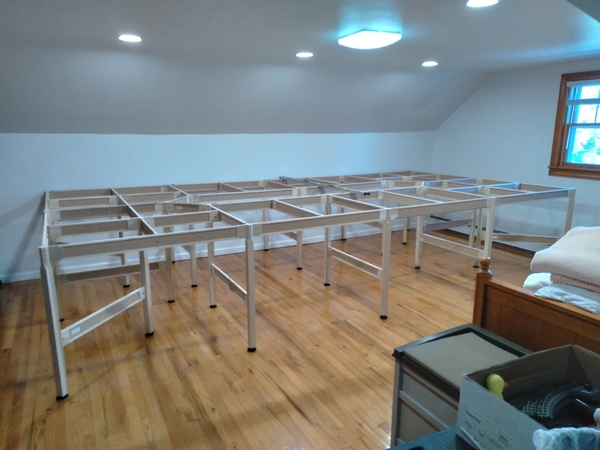IMO particle board is a terrible base! If you think plywood might warp, wait until you see what happens to particle board! A very long time ago(50+ years), I made some shelves using particle board. Even though they were supported quite well, the particle board bowed between the supports, and in addition after a few years it absorbed moisture and start flaking at the edges. Yes, they were painted with a couple of coats of paint, that didn't make any difference! IMO, that's likely the worst possible choice for a layout base!
Oh, and it's really not that strong, I can take an 8" wide piece of 1/2" particle board and break it by hand quite easily, try that with an 8" piece of plywood!
Where do you get your information? Particle board is used in mission critical construction all the time. The boards are fine like anything if you use it wrong it will fail.
The greatest benefit of using particleboard is its greater dimensional stability. As a result, it won’t lose shape due to temperature fluctuations and other similar environmental changes. Besides, particle boards don’t have any natural defects. Therefore, they provide adequate thermal and sound resistance.
Affordability
Particleboard is considerably more affordable than both plywood and solid wood. When undertaking a project that requires hundreds of sheets, particle boards will save you a lot of money. You can save up to 12% of your budget when installing kitchen cabinets, for instance.
Lightweight
Although particle boards are dense, they are incredibly lightweight. This makes transportation and handling relatively easy. It’s common to come across people who consider density a key consideration when purchasing wood.
However, it’s best to keep in mind that the denser a carpentry material is, the harder it is to work with. The denser wood is certainly heavier and more difficult to work with. The particleboard is strong but incredibly lightweight, which means it’s easy to move it to and from and around the job site,
Easy to Hold Nails
Particleboard has a higher capacity to hold nails and screws compared to MDF and plywood. As a result, it won’t crack or break when you drive nails or screws into it. Besides, the nails and screws will stay in place without moving, thanks to the dense composition of the boards. Furthermore, cutting, drilling, milling, gluing, and painting particle boards is easy.
Eco-Friendliness
Particle board is typically made from wood scraps, shavings, bagasse, and sawdust, which are considered waste. Most manufacturers make particleboard from leftovers that would otherwise be an environmental hazard.
Therefore, there’s little waste when manufacturing particle boards. Besides, extra logging needs to be done to produce particle boards. Some manufacturers even produce particleboards without using formaldehyde, which minimizes their environmental impact all the more.
Ease of Lamination
Particle wood provides a flat and smooth surface to work with. It’s easier to stick wood veneer or decorative laminates on particle boards to add beauty and even more aesthetic value to your project.
Cons of Particle Board
The biggest drawback of particleboard is that, despite its considerable strength, it can’t support heavy loads. Therefore, it may not be suitable for use in places such as kitchen countertops. Furthermore, continuous exposure to moisture and humidity will cause the boards to warp.
When compared to fiberboard or even some types of plywood, particleboard is low in strength. This means it’s more susceptible to damage when handling. It also limits the application of particle boards to only specific projects.
so you can see properly supported with framing and it will be fine.


















